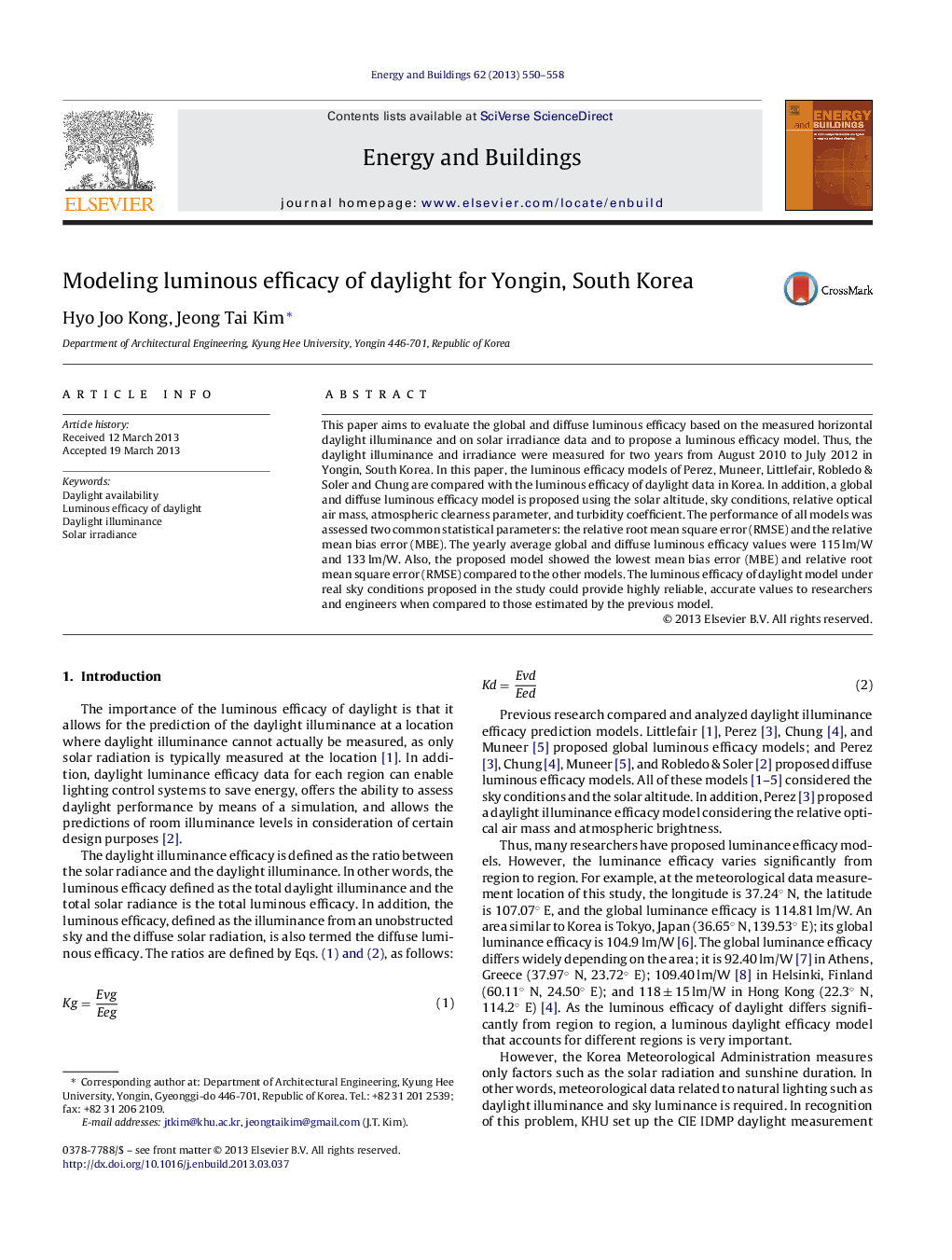| Article ID | Journal | Published Year | Pages | File Type |
|---|---|---|---|---|
| 263316 | Energy and Buildings | 2013 | 9 Pages |
•New luminous efficacy of daylight models is proposed.•We compared the daylight luminous efficacy prediction models.•We described annual global and diffuse luminous efficacy.
This paper aims to evaluate the global and diffuse luminous efficacy based on the measured horizontal daylight illuminance and on solar irradiance data and to propose a luminous efficacy model. Thus, the daylight illuminance and irradiance were measured for two years from August 2010 to July 2012 in Yongin, South Korea. In this paper, the luminous efficacy models of Perez, Muneer, Littlefair, Robledo & Soler and Chung are compared with the luminous efficacy of daylight data in Korea. In addition, a global and diffuse luminous efficacy model is proposed using the solar altitude, sky conditions, relative optical air mass, atmospheric clearness parameter, and turbidity coefficient. The performance of all models was assessed two common statistical parameters: the relative root mean square error (RMSE) and the relative mean bias error (MBE). The yearly average global and diffuse luminous efficacy values were 115 lm/W and 133 lm/W. Also, the proposed model showed the lowest mean bias error (MBE) and relative root mean square error (RMSE) compared to the other models. The luminous efficacy of daylight model under real sky conditions proposed in the study could provide highly reliable, accurate values to researchers and engineers when compared to those estimated by the previous model.
Graphical abstractFigure optionsDownload full-size imageDownload as PowerPoint slide
